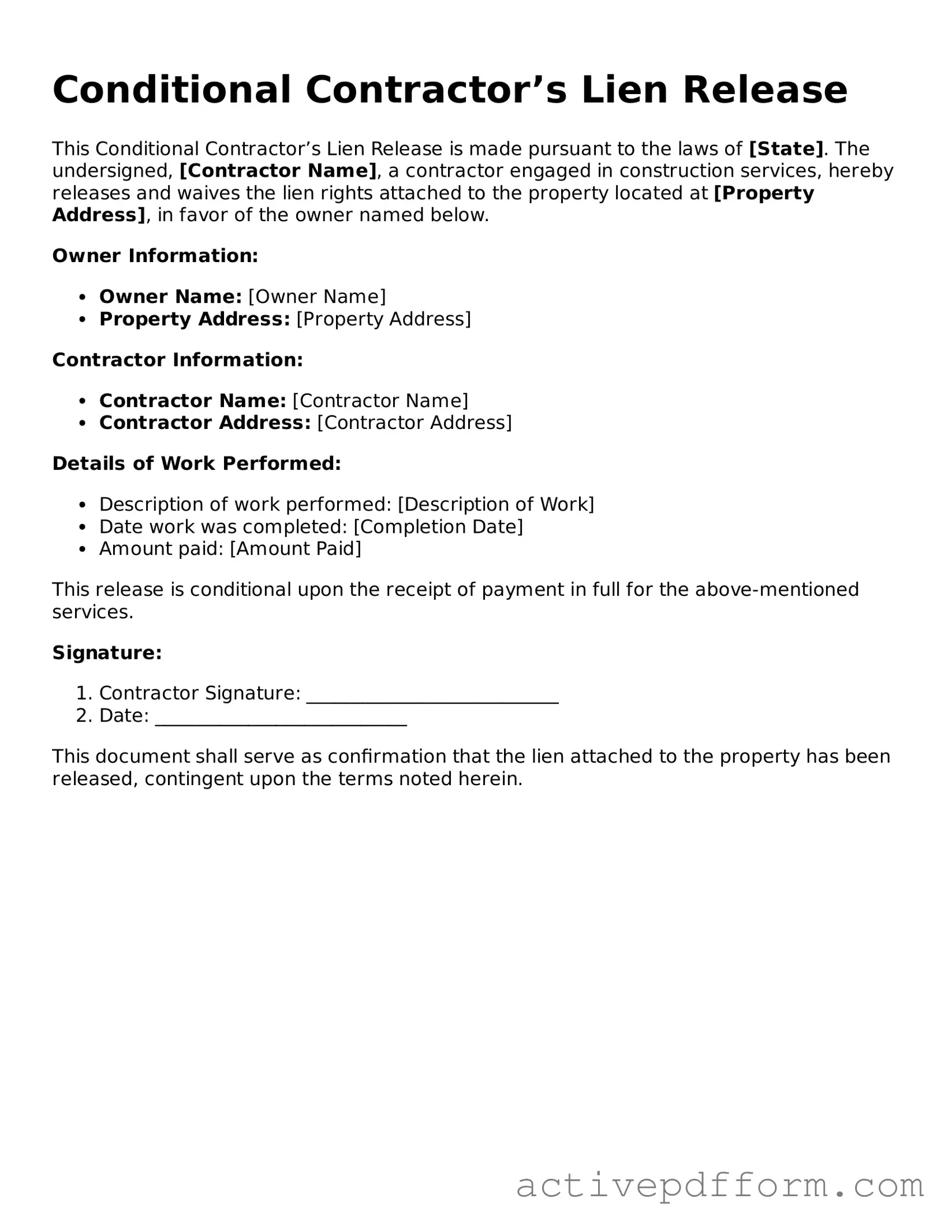What is a Conditional Contractor’s Lien Release form?
A Conditional Contractor’s Lien Release form is a document used in the construction industry. It allows a contractor or subcontractor to release their claim against a property for unpaid work, but only under certain conditions. Typically, this form is used when a payment is expected to be made shortly after the release is signed. It protects the property owner while ensuring that the contractor can still claim a lien if payment is not received.
When should I use a Conditional Contractor’s Lien Release form?
This form is appropriate when a contractor or subcontractor is about to receive a payment for work completed. It is often used during the payment process, especially when the contractor wants to reassure the property owner that they will not file a lien, provided that the payment is made as agreed. Using this form helps maintain a good working relationship between the parties involved.
What information is typically included in the form?
The form usually includes details such as the names of the parties involved, the property address, the amount of the payment being released, and a description of the work performed. Additionally, it may contain a statement indicating that the release is conditional upon the receipt of payment. This clarity helps prevent misunderstandings regarding the agreement.
Is a Conditional Contractor’s Lien Release form legally binding?
Yes, once signed, the form is legally binding, provided it meets the necessary legal requirements. It is important for all parties to understand the terms outlined in the document. If the conditions are not met, the contractor retains the right to file a lien against the property. Therefore, careful attention should be given to the details of the agreement.
What happens if the payment is not made after signing the release?
If the payment is not made after the Conditional Contractor’s Lien Release form is signed, the contractor can still pursue a lien against the property. The release is only effective as long as the conditions are met. It is crucial for contractors to keep records of all communications and agreements related to the payment to support any future claims.
Can a property owner refuse to sign this form?
A property owner can refuse to sign the Conditional Contractor’s Lien Release form if they do not feel comfortable with the terms or if they have not received satisfactory work. It is important for both parties to communicate openly about any concerns before proceeding with the signing of the document. Negotiation may be necessary to reach an agreement that satisfies both parties.
How does this form differ from an unconditional release?
The key difference between a Conditional Contractor’s Lien Release and an Unconditional Lien Release lies in the payment terms. An Unconditional Lien Release is effective immediately and does not depend on the receipt of payment. In contrast, a Conditional release is contingent upon payment being made. Understanding these distinctions is vital for both contractors and property owners.
Where can I obtain a Conditional Contractor’s Lien Release form?
Conditional Contractor’s Lien Release forms can often be obtained through legal stationery stores, online legal document providers, or construction industry associations. It is advisable to ensure that the form complies with state laws and regulations, as requirements may vary. Consulting with a legal professional can also provide guidance on obtaining and completing the form correctly.
